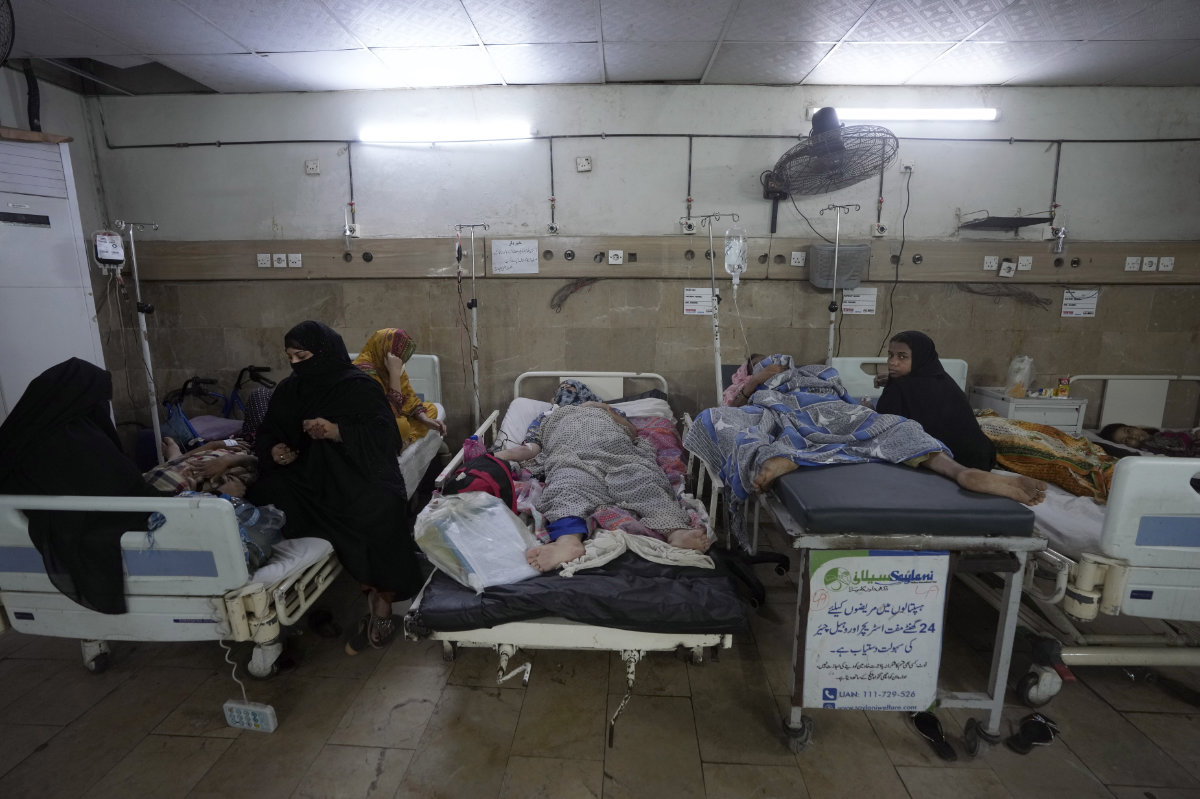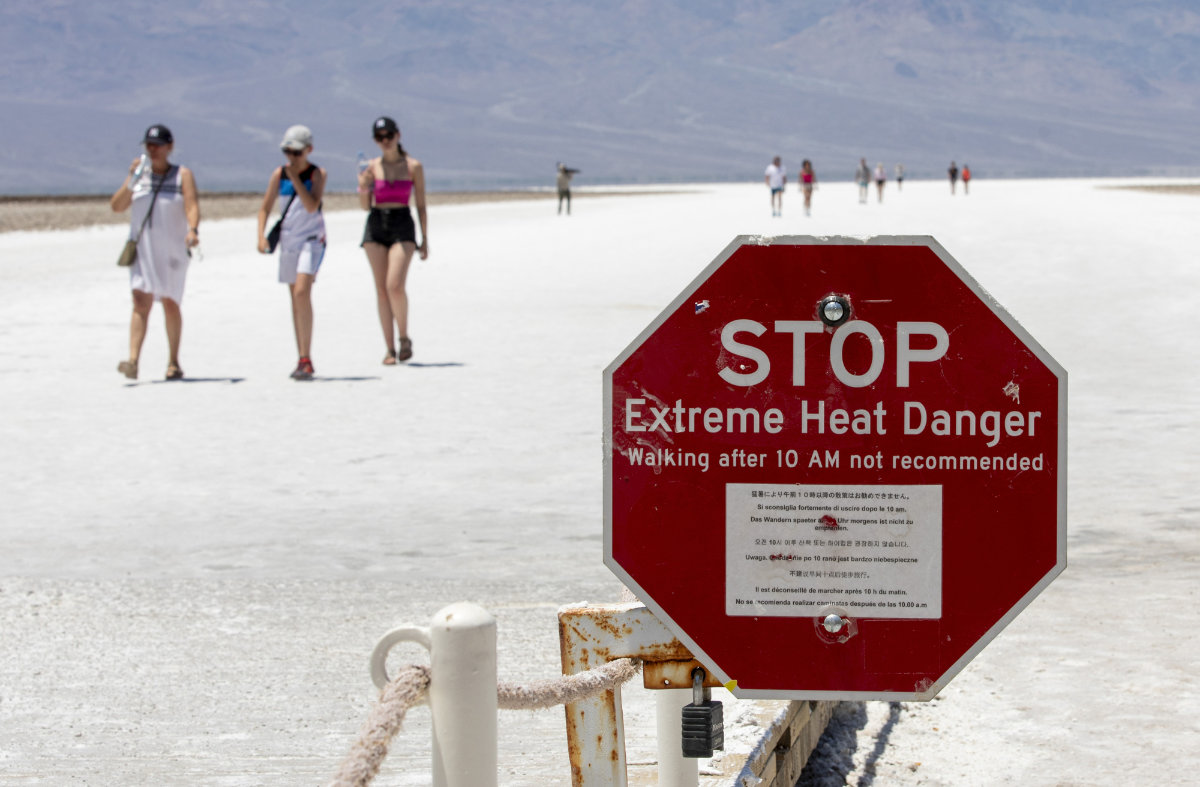Life and death in the heat. What it feels like when global temperatures soar to record highs
BENI MELLAL, MOROCCO: In the relentless heat of Morocco’s Central Atlas, people sleep on rooftops. Hannah Aubour also needed shelter, but she was waiting outside the hospital for her diabetic cousin in an unair-conditioned room.
On Wednesday, 21 people died from heatstroke at the main hospital in Beni Mellal, where temperatures soared to 48.3 degrees Celsius (118.9 degrees Fahrenheit) and where 575,000 people were living, most without air conditioning.
“We have no money and no choice,” says Aubur, a 31-year-old unemployed woman from Kasbah Tadla, a city that some experts say is one of the hottest on Earth.
“Most of the deaths were among people with chronic diseases and the elderly, as high temperatures worsened their health conditions and led to death,” Kamal Eliansley, the district's health officer, said in a statement.
It's a crossroads of life and death in the heat.
As global warming took hold, with the past week marking four of the hottest days on record, the world was looking at the cold, hard numbers showing the average daily temperature across the planet.
But the 17.16 degrees Celsius (62.8 degrees Fahrenheit) recorded on Monday doesn’t convey how stiflingly sticky certain places can get when the sun and humidity are at their peak. The thermometer doesn’t tell the story of the warmth that lingers at night, helping people sleep.
Records are about statistics, scoring. But people don't feel the data. They feel the heat.
“We don’t need a scientist to tell us what the outdoor temperature is, our bodies can tell us immediately,” said Humayun Saeed, a 35-year-old street fruit vendor in Lahore, Pakistan’s cultural capital.

Heatstroke patients receive treatment at a hospital in Karachi, Pakistan, July 25, 2024. (AP)
Said had to go to the hospital twice in June due to heatstroke.
“It was hard to work in May and June because of the heat, but things are much better now. But I am avoiding morning walks,” Saeed said. “I may start again in August when the temperature drops further.”
Standing outside the Bucharest train station in Romania, the 38-year-old pregnant woman Delia felt even more uncomfortable because of the heat. During the day, it was so hot that she felt sleepy. At night, because there was no air conditioning, she considered sleeping in the car like her friend.
“I felt like my temperature really went up. I think everyone felt the same, especially because I was pregnant,” said Delia, who gave only her first name. “But I don't think it was just me. It was really everyone.”
Karin Bumbako, a self-proclaimed weather geek, has always been sensitive to the weather, but after days of much warmer-than-usual weather in Seattle, she started to think it was a little too much.
“I love science. I love weather. Ever since I was a kid,” said Bambako, Washington's deputy state meteorologist. “It's fun to see records being broken every day. … But in the last few years, just experiencing it and actually feeling the heat has gotten more miserable every day.”
“Like what happened recently, I wasn’t sleeping well. We don’t have air conditioning in the house,” Bumbaco said. “Every morning I would see the thermostat go up a little bit warmer than it was the morning before. The heat was building up in the house and I couldn’t wait for it to end.”
What was an academic exercise on climate change for climate scientists around the world literally hit home.
“I’ve been crunching these numbers from the cool of my office, but the heat is starting to take its toll on me, and the warmer temperatures in the city are keeping me up at night,” said Roxy Mathew Cole, a climate scientist at the Indian Institute of Tropical Meteorology in Pune, Maharashtra, which generally has a relatively temperate climate.
“My kids come home from school exhausted,” Cole said. “Last month, one of my colleagues’ mothers died of heatstroke in northern India.”

A stop sign warns tourists of extreme heat in Badwater Basin, Death Valley National Park, California, on July 8, 2024. (Las Vegas Review-Journal via AP)
Philip Mott, a climate scientist and dean of Oregon State University's Graduate School of Graduate Studies, moved to California's Central Valley, where summer heat can reach 90 degrees, when he was in middle school.
“I quickly realized I didn’t like the hot, dry climate,” Mott said. “So I moved to the Northwest.”
For decades, Mote has addressed climate issues from the comfort of Oregon, where people feared that global warming would make the Northwest “the best place in America to live, and everyone would move here and there would be overpopulation.”
But the region has suffered devastating fires in 2020 and deadly heatwaves in 2021, forcing some people to flee what was once considered a climate haven.
The temperature hit 104 degrees (40 degrees Celsius) the second week of July. Mote, a member of the Masters Rowing Club, practices on the water on Tuesday and Thursday evenings, but this week he decided to float down the river on a tube.
Tubing has become so popular in Boise, Idaho, that with temperatures ranging from 99 to 108 degrees Fahrenheit (37 to 42 degrees Celsius) for 17 days, waits are 30 minutes to an hour to get in the water, said John Tullius, general manager of Boise River Rafts & Tubing.
“It feels like we've had record numbers for the last 10 days in a row,” Tullius said, adding that he was concerned about the physical strain on field workers, particularly those picking up rafts at the end of the trek.
He created special shade for them, added more workers to lighten their workload, and encouraged them to drink plenty of water.
The swan-shaped pedal boat rental shop in Denver City Park is not that crowded, because it is so hot outside that those brave enough to go out have to sit in warm fiberglass chairs.
There is little shade for the workers, but “we are holed up in a little hut,” said 23-year-old worker Dominic Prado. “We have a really strong fan there, and I put my shirt up to cool down.”
